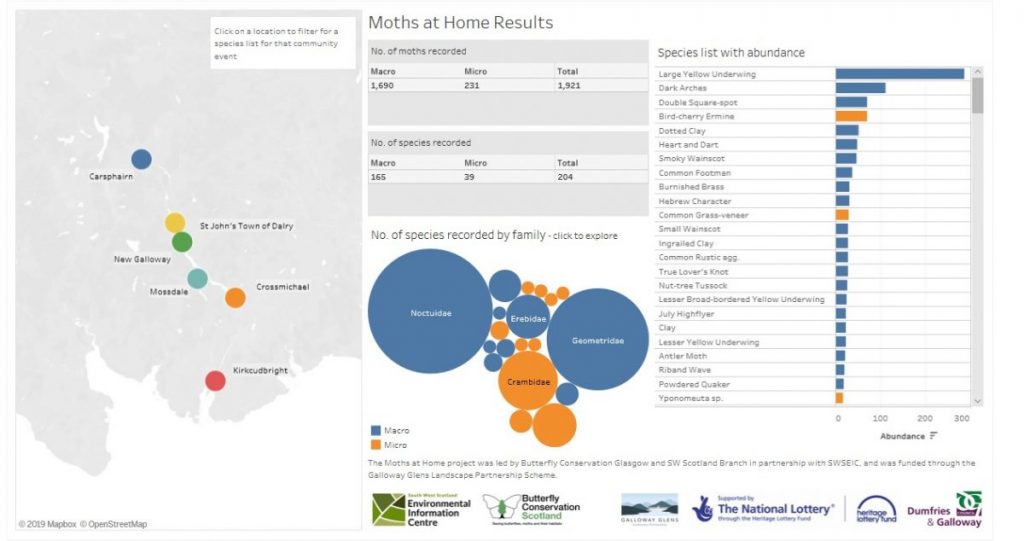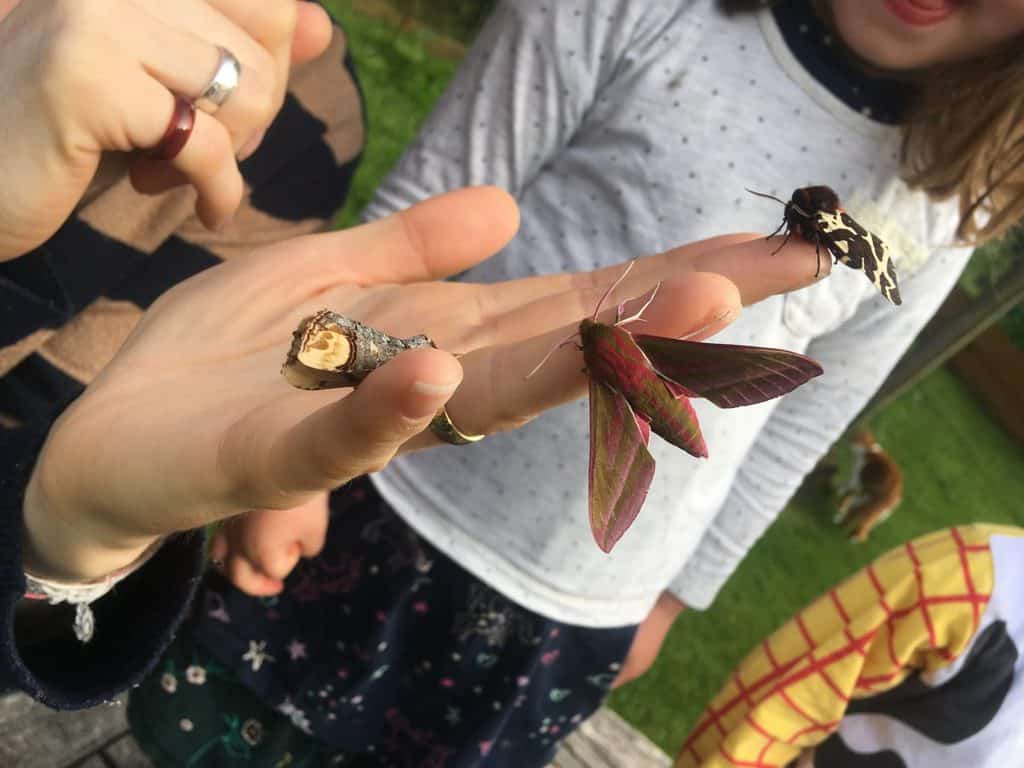This week the ‘Moths’ at Home’ project, run by Butterfly Conservation Scotland and the South West Scotland Environment Information Centre (SWSEIC), published the results from a series of six moth trapping sessions held in local communities in the Galloway Glens area between May and September 2019. 35 traps were set in 19 different locations.
In all, a total of 1912 moths were caught and identified, including 204 different species.
Highlights included:
- Clay Triple-lines – very rare in Scotland
- Devon Carpet – a recent colonist to Scotland
- Vestal – an autumn migrant
- August Thorn, Scallop Shell and Clouded Magpie – all species local to SW Scotland
As well as improving the data held on Moths in Galloway, this project proved very popular with the general public and was an opportunity to engage with an often-overlooked aspect of Galloway’s local fauna.
The project was funded through the Galloway Glens ‘Our heritage’ Small Grants Scheme, using funds from the National Lottery Heritage Fund.
 Jude Crooks, Galloway Glens Administrator, said:
Jude Crooks, Galloway Glens Administrator, said:
“It is fascinating to think that we have more than 200 species of moths flying through Galloway at night. This project has been a great opportunity to better understand our local moth population, while gathering valuable data for the South West Scotland Environmental Information Centre’s records. A lot more information about what has been found can be seen on their website www.swseic.org.uk, and anyone interested in learning more about this fascinating topic should go to the talk entitled ‘Moths at Home – a window into secret lives of moths in the Galloway Glens’ on 4th December at 7.30 in Dalry Town Hall.
Many thanks to National lottery Heritage Fund for the funding and all volunteers who gave their time to the project.”
Paul Kirkland, Director of Butterfly Conservation Scotland, said:
“This has been a marvellously successful collaborative project between Butterfly Conservation Scotland and the Environmental Information Centre, funded by the Galloway Glens Partnership. We are thrilled that so many people could experience the joy of mothing in their local communities, aided by our wonderful volunteers. The records are invaluable because moths are superb indicators of the state of the environment and the data collected will add to the overall picture of how they are faring. We very much to continue and expand this type of work in future years”
Peter Norman, leading on the project on behalf of the South West Scotland Environmental Information Centre, added:
“The project has demonstrated how easy it is to collect valuable wildlife information, whilst at the same time having fun. South West Scotland Environmental Information Centre looks forward to working with people and communities in the Galloway Glens area again in the future.”
Photos credit: Galloway Glens Scheme





